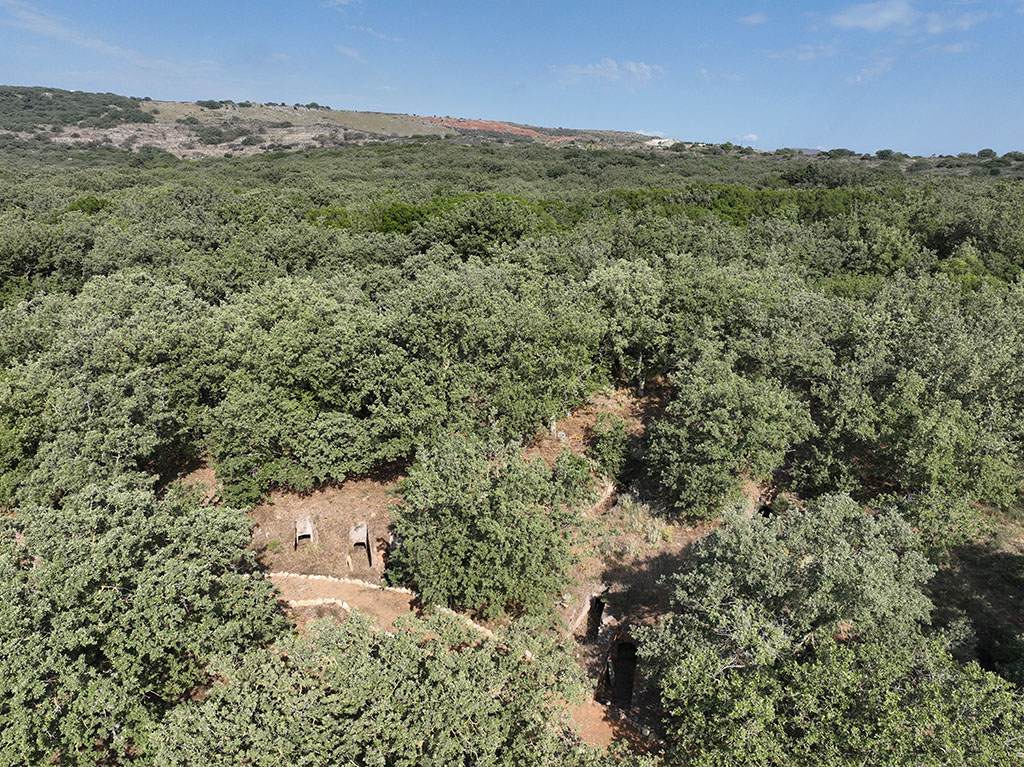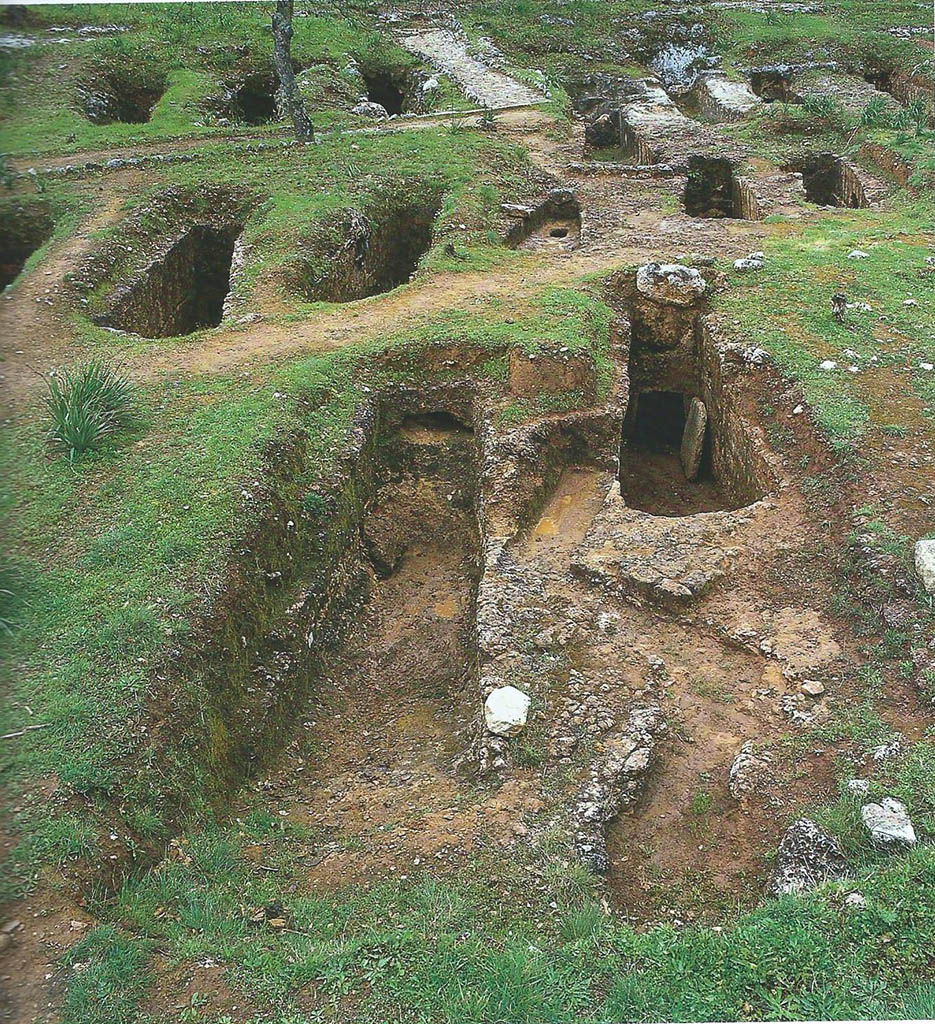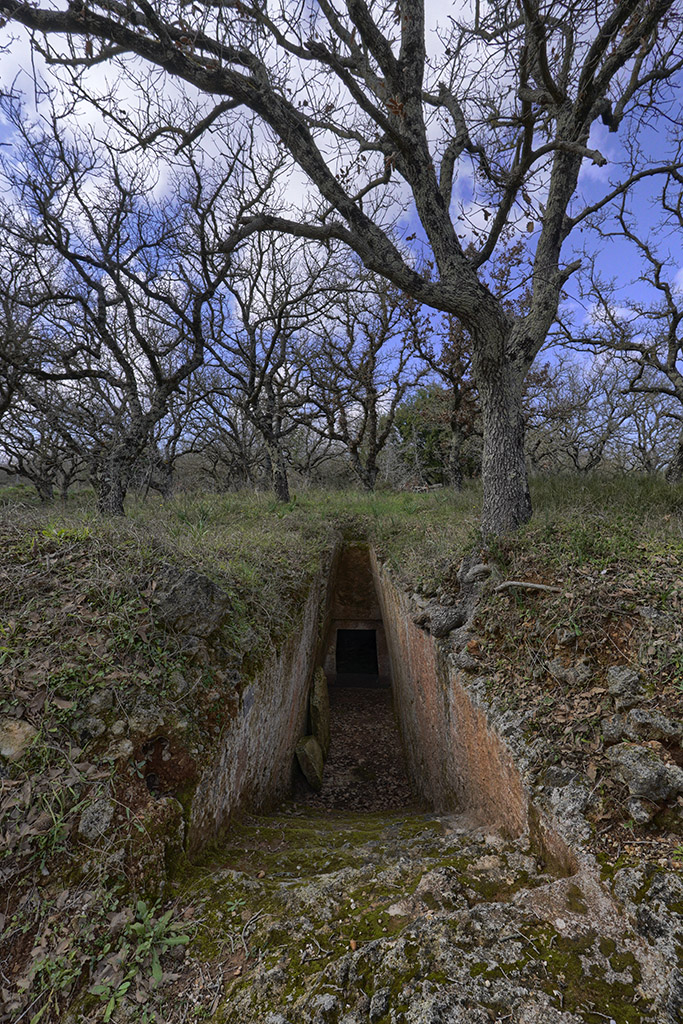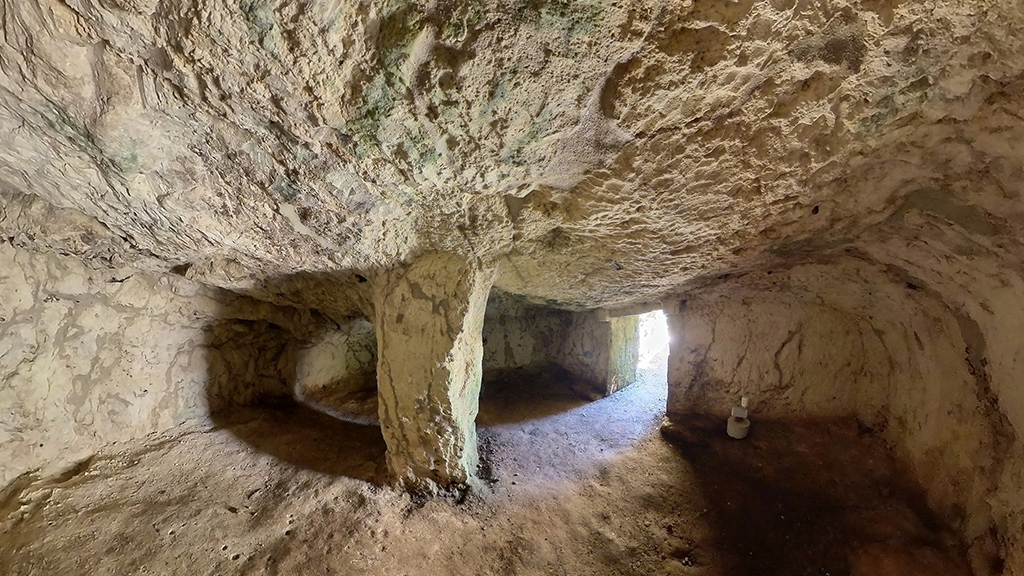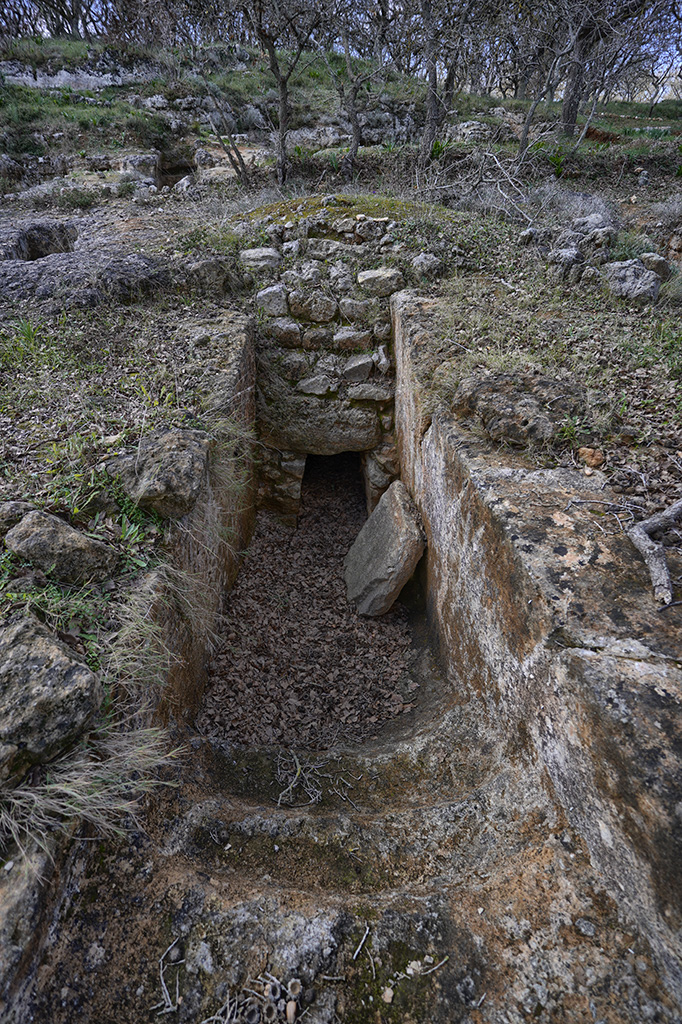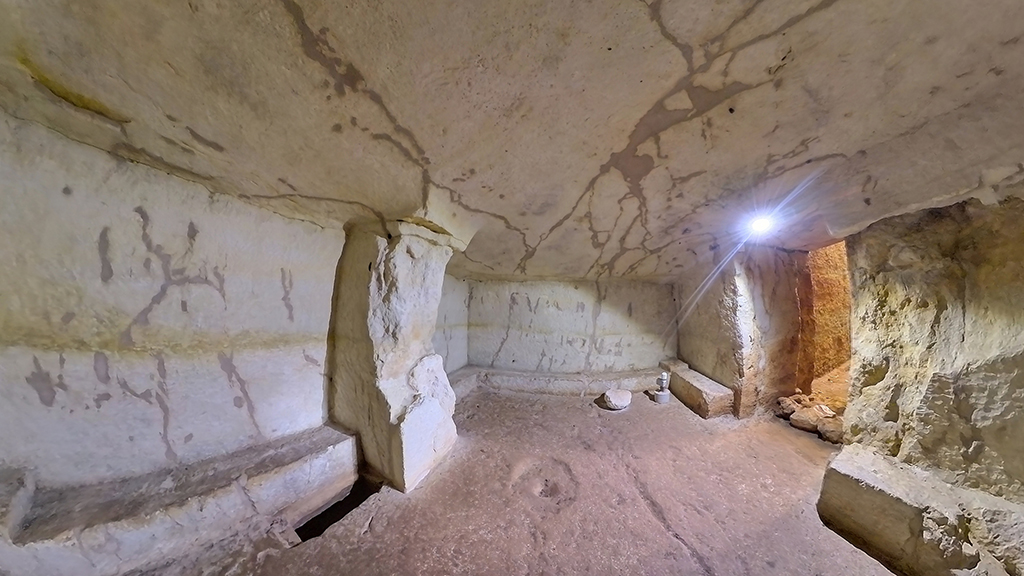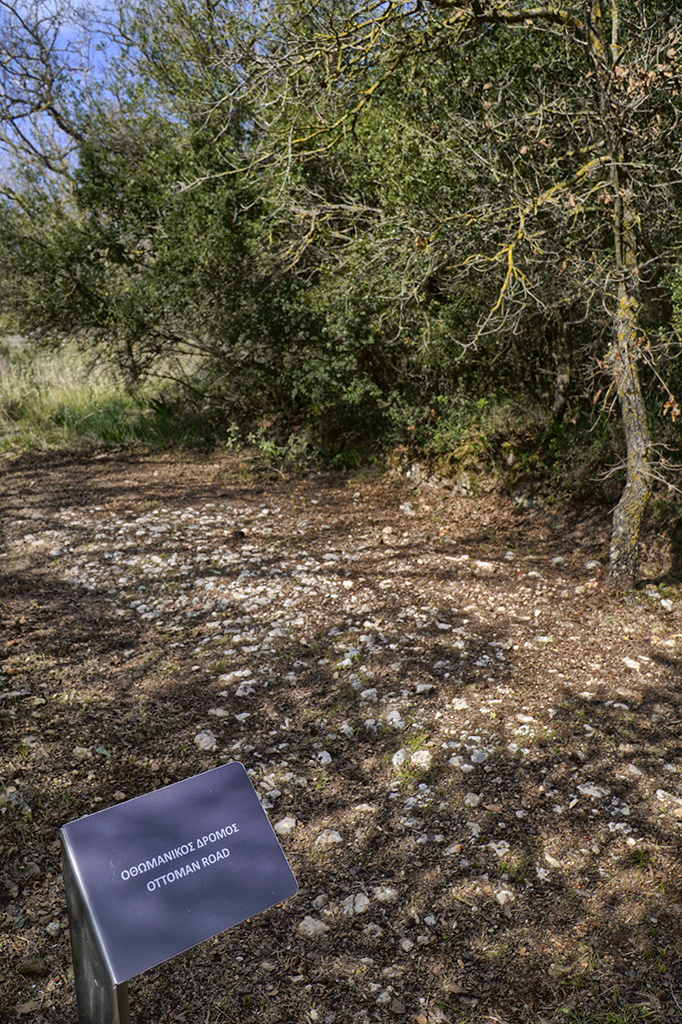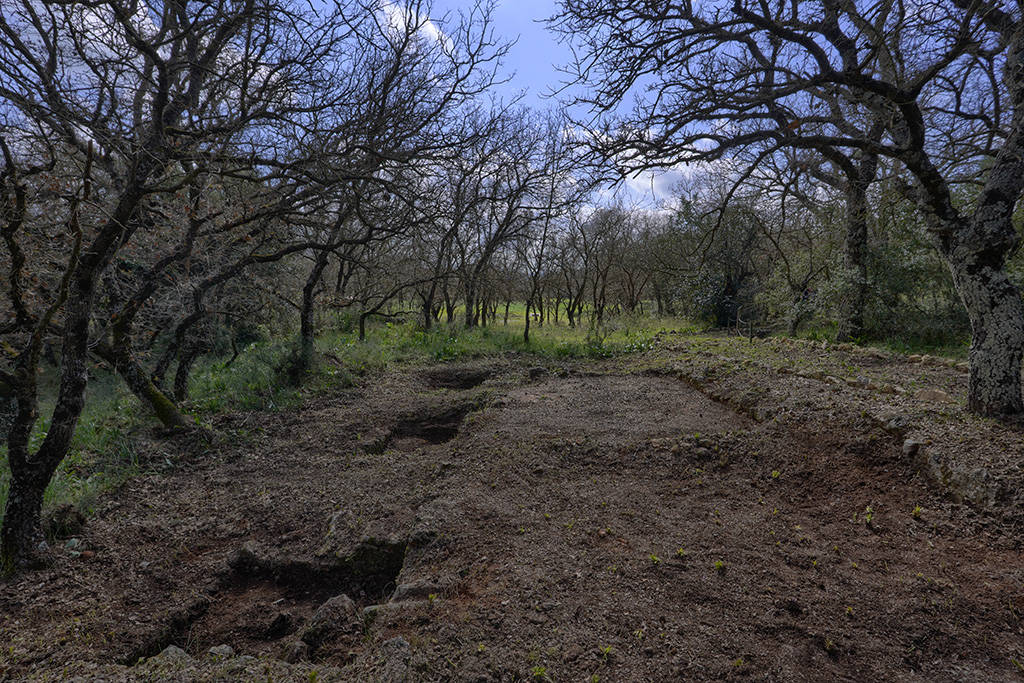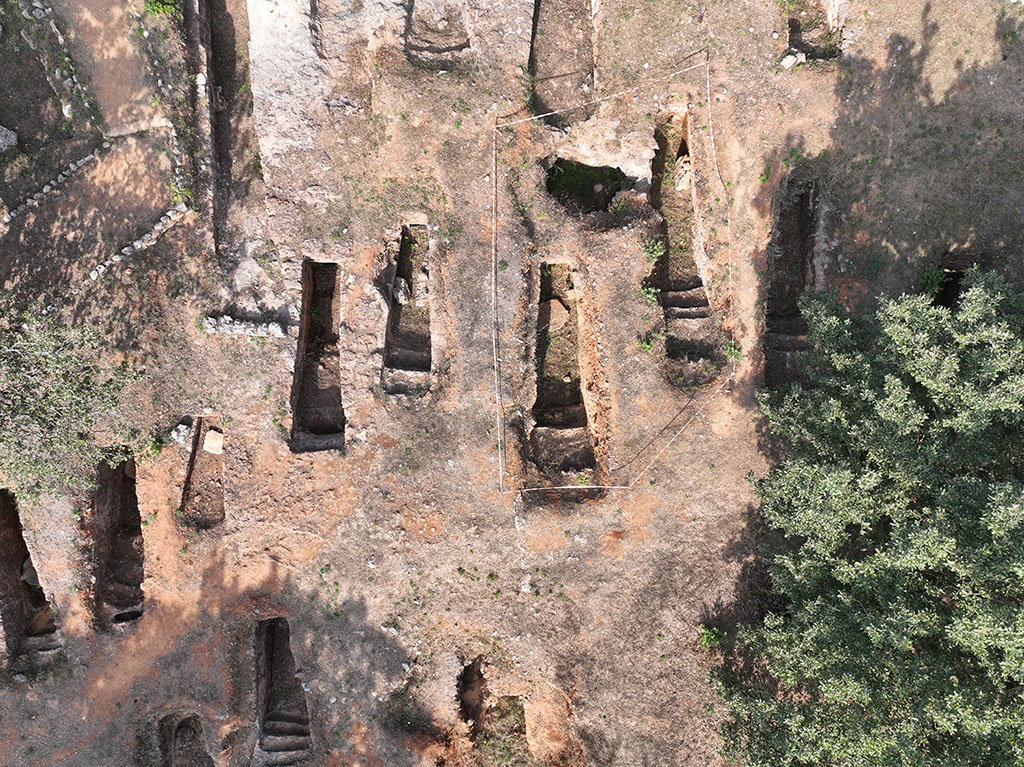
View of a section of the East cluster of tombs. LMIII cemetery of Armenoi. Aerial photograph.
The archaeological site of Armenoi in Rethymno
The cemetery of Armenoi is located approximately 10 km south of the city of Rethymno, extending on the eastern slope of the Prinokephalo hill. It was discovered by chance in 1969, when students from the neighboring village of Somatas accidentally found some vessels on the surface that had been removed from the tombs by small animals (badgers). Systematic excavation began in 1969, under the direction of the Emeritus General Director of Antiquities of the Ministry of Culture, Yiannis Tzedakis.
The graves, which were largely undisturbed, belonged to families and date to the LMIII A-B period (circa 1425-1210 BC). They are two hundred and thirty one (231) chambered tombs with an entrance passage (dromos) carved in marly limestone. The dromos that led to the chamber had the form of a ramp or descending steps. The entrance to the tomb was covered with a slab or a stone barrier. Some of the tombs had gravestones.The dead were either laid directly on the ground or in clay chests. Before each new burial the bones were collected.
The cemetery was divided into three groups of tombs to the east, west and south.The Eastern cluster contains one hundred and seventeen (117) tombs in a dense arrangement. The Western cluster consists of forty seven (47) tombs in a sparse arrangement and is located at the highest level of the cemetery. The Southern cluster is relatively isolated and contains sixty seven (67) tombs. In proximity and to the north of the Southern cluster, part of a Minoan road has been uncovered, which provided access to the necropolis.
Thirty two (32) clay chests (larnakes) with painted decoration and eight hundred (800) vessels were discovered inside the tombs. Among the grave goods were several bronze tools and weapons, some jewelry made of gold, faience and semi-precious stones, and at least one hundred and sixty (160) seal stones.
The finds from the tombs of the cemetery of Armenoi reflect mixed Minoan and Mycenaean features, characteristic after the fall of the Minoan Palaces and the arrival of the Mycenaeans in Crete (1500-1450 BC).
Bibliography
Τζεδάκις, Γ. (1988) . Δρόμος ΥΜΙΙΙ νεκροταφείου. Κρητική Εστία, Περίοδος Δ΄, Τόμος 2, Χανιά, 295, πίν.2β.
Papathanassiou, M., Hoskin, M., & Papadopoulou, H. (1992). Orientations of tombs in the Late-Minoan cemetery at Armenoi, Crete. Journal for the History of Astronomy, 23 (17), 45.
Papadopoulou E. (1997). Une tombe à tholos ‘ intra muros’: le cas du cimetière MR d’Arménoi, in Driessen, Farnoux (eds) Actes de la table Ronde, Internationale organisee pal l’Ecole Francaise d’Athenes, (25-28 Mars 1991), 319-340.
Tzedakis, I., & Martlew, H. (1999). Minoan and Mycenaean flavours. Kapon, Athens.
Tzedakis, Y., & Martlew, H. (2007). A chorotaxia at the Late Minoan III cemetery of Armenoi. Krinoi kai limenes Studies in Honor of Joseph and Maria Shaw, 22, 68-72, 68- fig.8.1, 70-71.
Tzedakis, Y., Martlew, H., & Arnott, R. (2018). The Late Minoan III Necropolis of Armenoi (Vol. 1). ISD LLC, 1-17.
Tzedakis, Y. & Kolivaki, V. (2018). Background and History of the excavation in Tzedakis et al (eds), The Late Minoan III Necropolis of Armenoi, Vol.1, 6, 8-9, 17
Eillen Chappell & Steve Allender (2018). Site investigations of the Necropolis and its environs: The search for the town. In Tzedakis, Y., Martlew., H. & Arnott, R. (eds), The Necropolis of Armenoi III, Vol. 1, 32, 46-49.
Photo Gallery
- Aerial photography of the cemetery and the forest. Southern Cluster of Tombs at the LM III cemetery of Armenoi.
- Ritual deposits in the Eastern cluster of tombs. LMIII cemetery of Armenoi.
- Tomb 55. LMIII cemetery of Armenoi.
- Descenting set of steps at the passage (dromos) of Tomb 55. LMIII cemetery of Armenoi.
- Tomb 24. LMIII cemetery of Armenoi.
- Interior of Tomb 24. LMIII cemetery of Armenoi.
- View of the entrance passage (dromos) and the entrance of the partially vaulted Tomb 200. LMIII cemetery in Armenoi.
- Interior of Tomb 159. LMIII cemetery of Armenoi.
- Ottoman/German road. LMIII cemetery of Armenoi.
- Area of the German military outpost. Tomb 55 is visible in the background.
- Area with the wine presses within the LMIII cemetery of Armenoi.
- Part of the Minoan road. LMIII cemetery of Armenoi.

